January 12, 2020 📊 Bernie Sanders is not throwing away his shot
After months of a stagnant campaign, the senator is enjoying a swell in support—but victory is still a far way off (for everyone)
Welcome! I’m G. Elliott Morris, a data journalist for The Economist and blogger of polls, elections, and political science. Happy Sunday! This is my weekly email where I write about politics using data and share links to what I’ve been reading and writing. Thoughts? Drop me a line (or just respond to this email). If you like what you’re reading, please tap the ❤️ below the title and share with your friends!
Dear Reader,
This week’s main read: Despite a few ebbs and flows in certain candidates’ polling numbers, the story of the 2020 Democratic presidential campaign has largely been its stability. Support for Joe Biden is essentially where it was when the primary race began a year ago, for example, and most of the other candidates have been held to about 5% of where they’ve been for the past 6 months. But early signs of a surge in the polls (and a corresponding increase in the betting markets) for Bernie Sanders—at both the state and national level—is a break from this narrative that warrants discussion, though not over-interpretation.
Plus, others have published good work about how to translate polls to probabilities, why the super-wealthy are happier than the rest of us, why the futures of the Democratic and Republican parties lie in the sunbelt and how vaccinations prevent disease and death.
Thanks all for reading my weekly email. Please consider sharing online and/or forwarding to a friend. The more readers, the merrier! If you’re shy, the best way you can support my newsletter is to press the heart button below the title (this makes it rank higher in Substack’s curation). If you’d like to read more of my blogging I publish subscriber-only content 1-3x a week on this platform. Click the button below to learn more!
—Elliott
Bernie Sanders is not throwing away his shot
After months of a stagnant campaign, the senator is enjoying a swell in support—but victory is still a far way off (for everyone)
Bernie Sanders today appeared to go all-in on an aggressive campaign against his major rivals in the 2020 Democratic primary race. The criticism has been especially focused on Joe Biden, who the Sanders campaign has particularly criticized for having the wrong position on the Iraq War (Biden voted for it) and never acknowledging his error. Sanders surrogate Nina Turner also published an op-ed in the state newspaper of South Carolina today in which she attacks Biden for his record on… well, pretty much everything.
The shift in the Sanders campaign’s tactics comes as Bernie is enjoying a swell, maybe even a surge, in support—at both the state and national level.
Across polling averages, Sanders is posting his best numbers since May 2019. Take The Economist’s aggregate as a chief example. Per their number-crunching, Bernie is polling at 18%, up from 16% last year. Moreover, the confidence interval of their aggregate shows that Sanders might possibly be above 20% for his first time ever. FiveThirtyEight’s polling average also shows a recent bounce for Sanders.
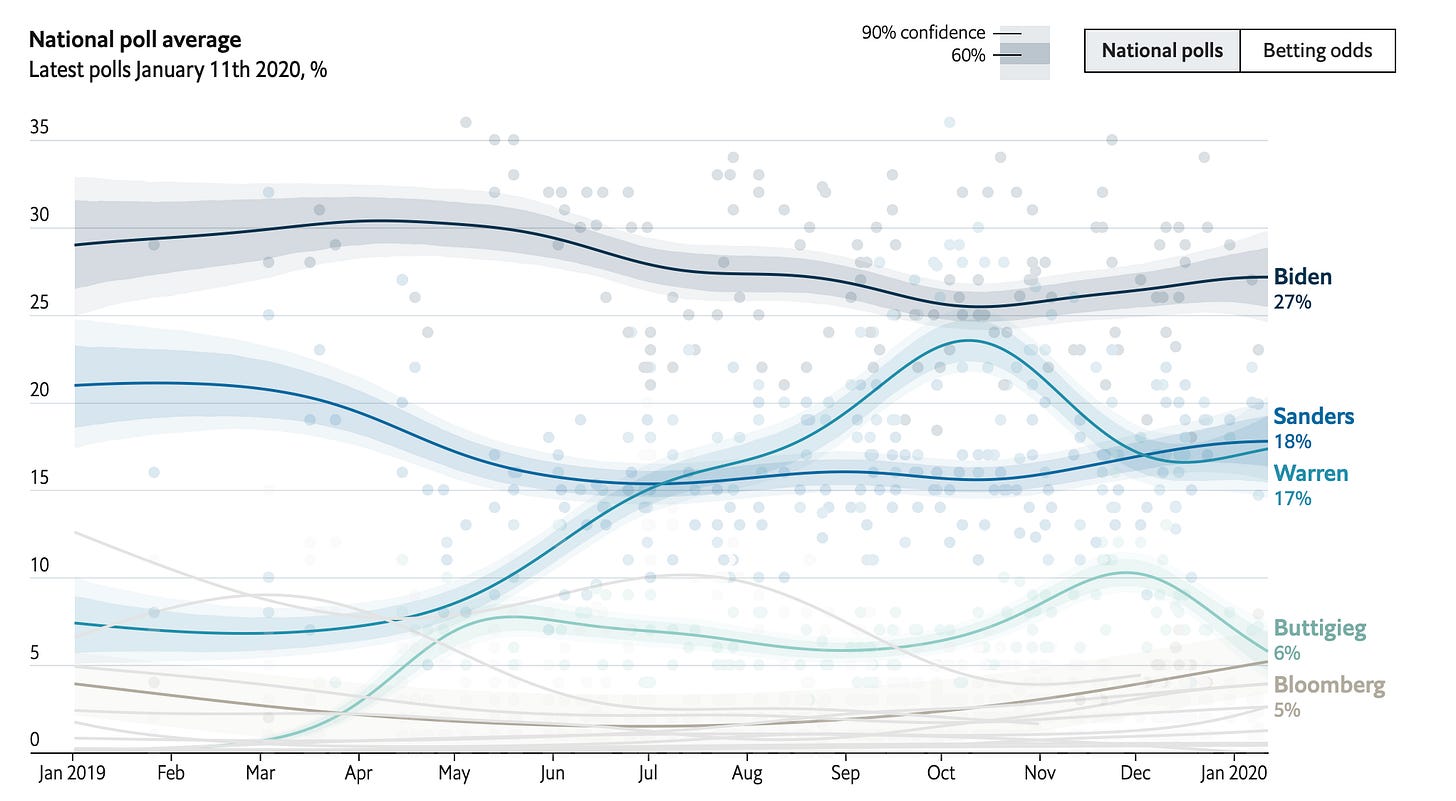
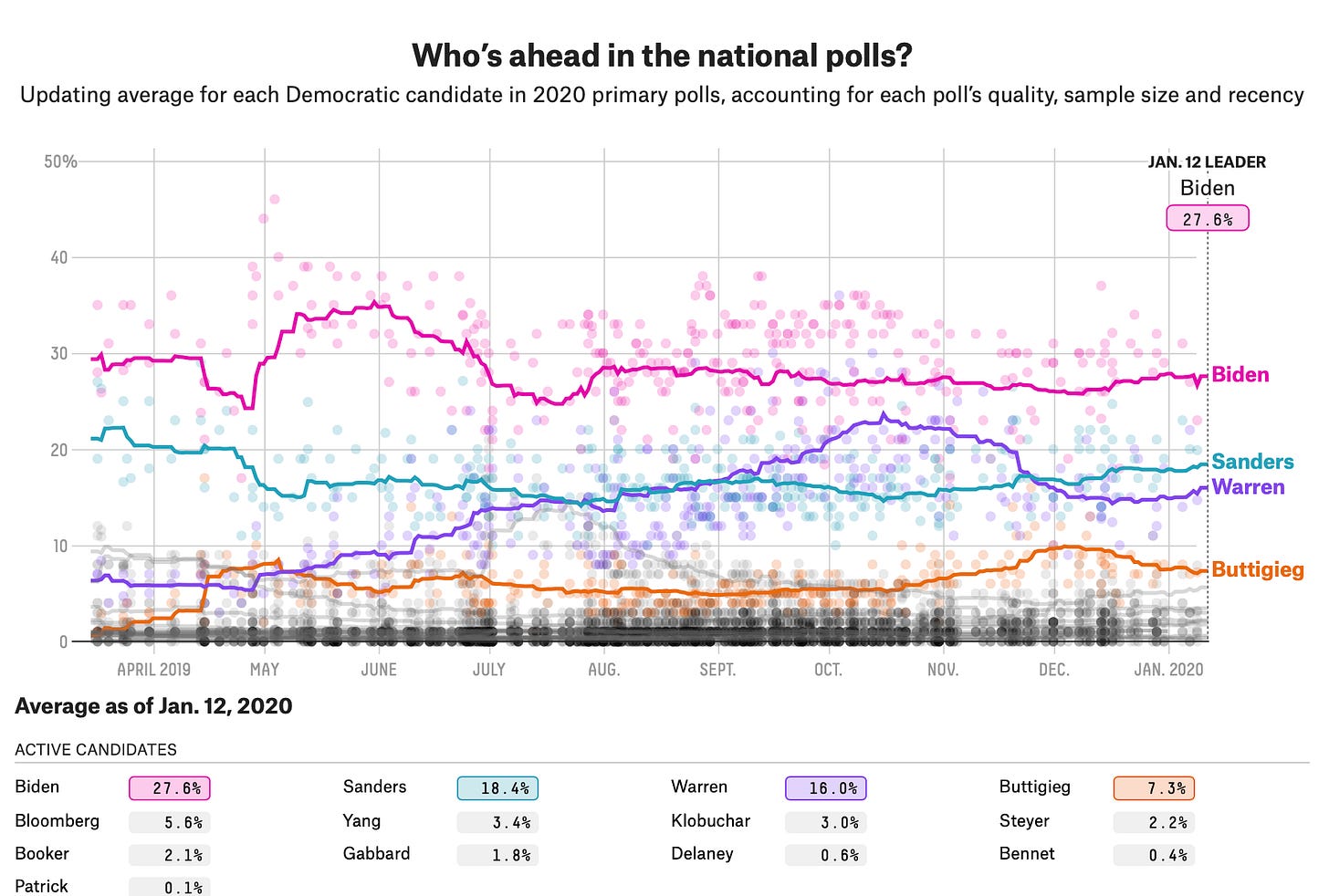
Let’s not read too much into the national numbers, or exaggerate Bernie’s numbers there too much, however. Though his average polling numbers have increased, the trend line is still well within the margin of error that The Economist calculates for Bernie’s polls over the past few months, and 538 shows a relatively gradual increase. The movement might not be real, in other words, though probabilistically speaking it likely is greater than 0.
The more impressive (and important) shift in the race has happened at the state level. Sanders is posting his best numbers yet in Iowa and New Hampshire, the first two states to vote.


Don’t sleep on early state polls; these numbers are really important. If Bernie can beat expectations in Iowa, he’ll get a bounce in media coverage and voter support that will impact his performance for the rest of the primary. Indeed, FiveThirtyEight’s modeling shows that the chance Bernie wins the nomination increased by about 2% when he got a better-than-expected poll from CNN and the Des Moines Register in Iowa on Friday:
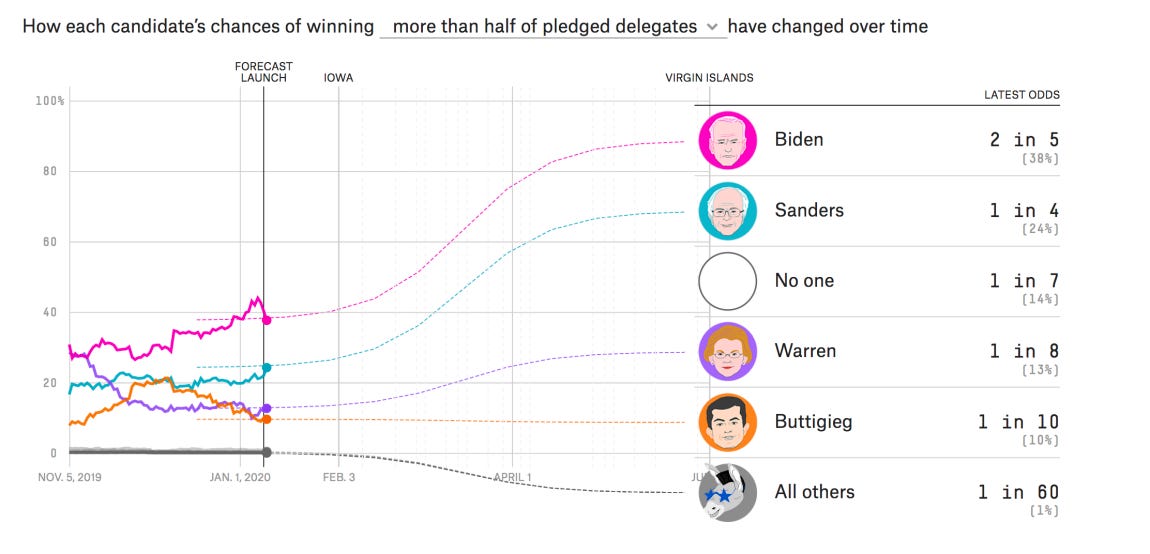
Betting markets have been even more bullish toward Sanders in recent weeks. Following the CNN/DMR poll, they gave Bernie a 6 percentage point boost in his probability of winning the Democratic nod. I personally think this is too reactionary—the history of the market so far shows some very quick changes and reversions—but it nevertheless is directionally correct.
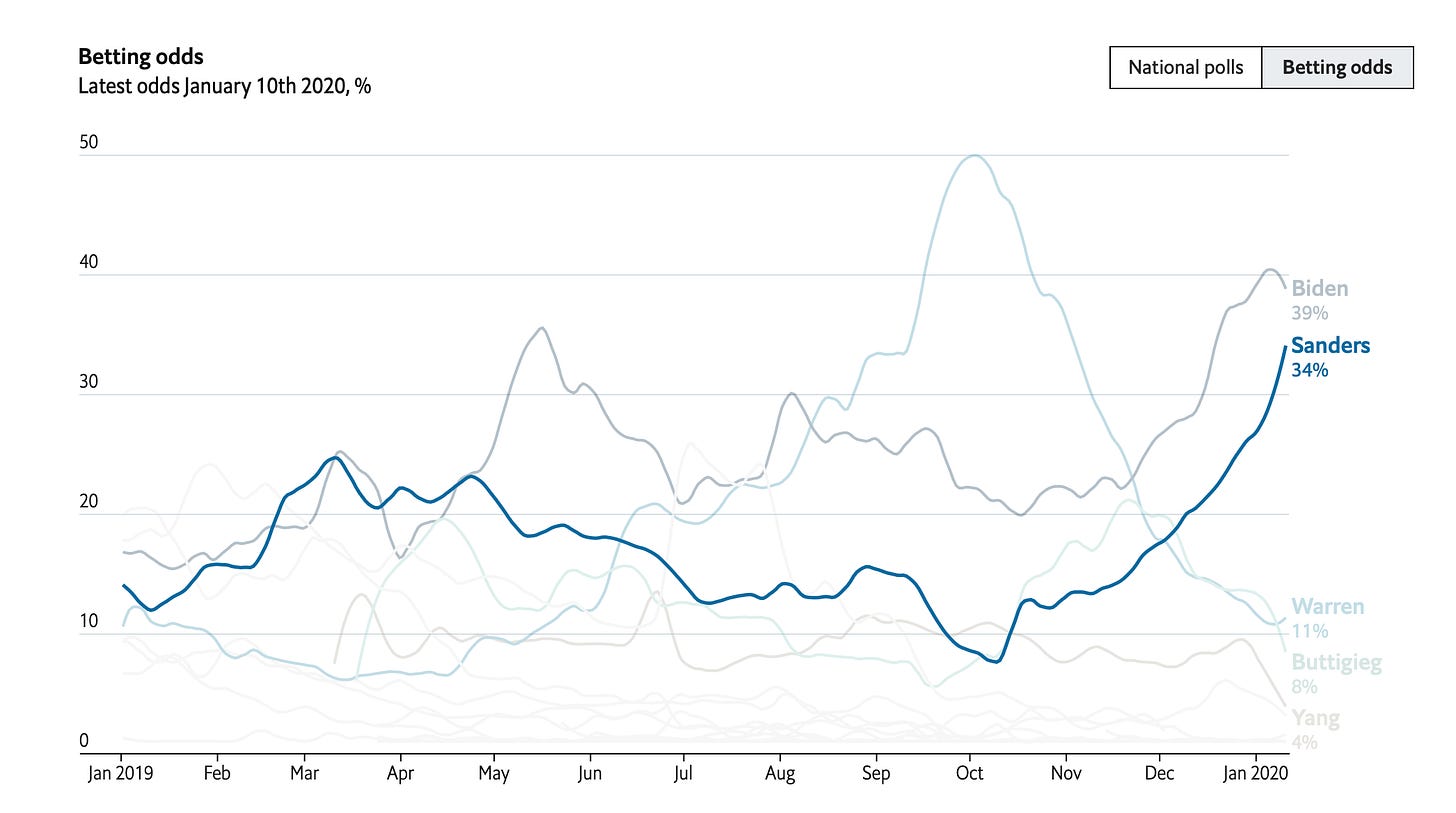
All this data taken into account, I think Sanders is better positioned now to win the primary than he has been over the course of the whole 2020 campaign thus far. Not only are his numbers in IA and NH better, but he also increased his standing among non-whites recently, which will improve his prospects in Super Tuesday states.
Still, the primary is unpredictable. The top candidates still have just a 1-in-3 chance, at best, of winning a majority of delegates, and the polls in Iowa and New Hampshire are all very close. It could be more likely that we ultimately see a surprise outcome than it is that anything that looks likely today actually happens.
So strap in. Iowa is in just a few weeks and the primary is going to get crazy. The Sanders campaign’s newly-aggressive strategy is just a preview of the more turbulent race to come.
And here are some selected links to the work I read and wrote last week:
Posts for subscribers:
January 9: About Tom Steyer's good polls from Fox News. State-level averages still short him, and he's near 0% in the crucial contests of Iowa and New Hampshire
Links and Other Stuff
Translating primary polls to probabilities
FiveThirtyEight’s Geoffrey Skelley had an interesting piece out last week about how different candidates’ standing in national polls translates to their odds of winning the nomination. Geoffrey took polls conducted in the second half of presidential nominating contests from 1976 through 2016 and ran them through a logistic regression model to create predictions of the probability that any candidate would win the nomination, given their standing in the polls. If you plug in how the 2020 Democrats are polling now to that equation, you get something like this:
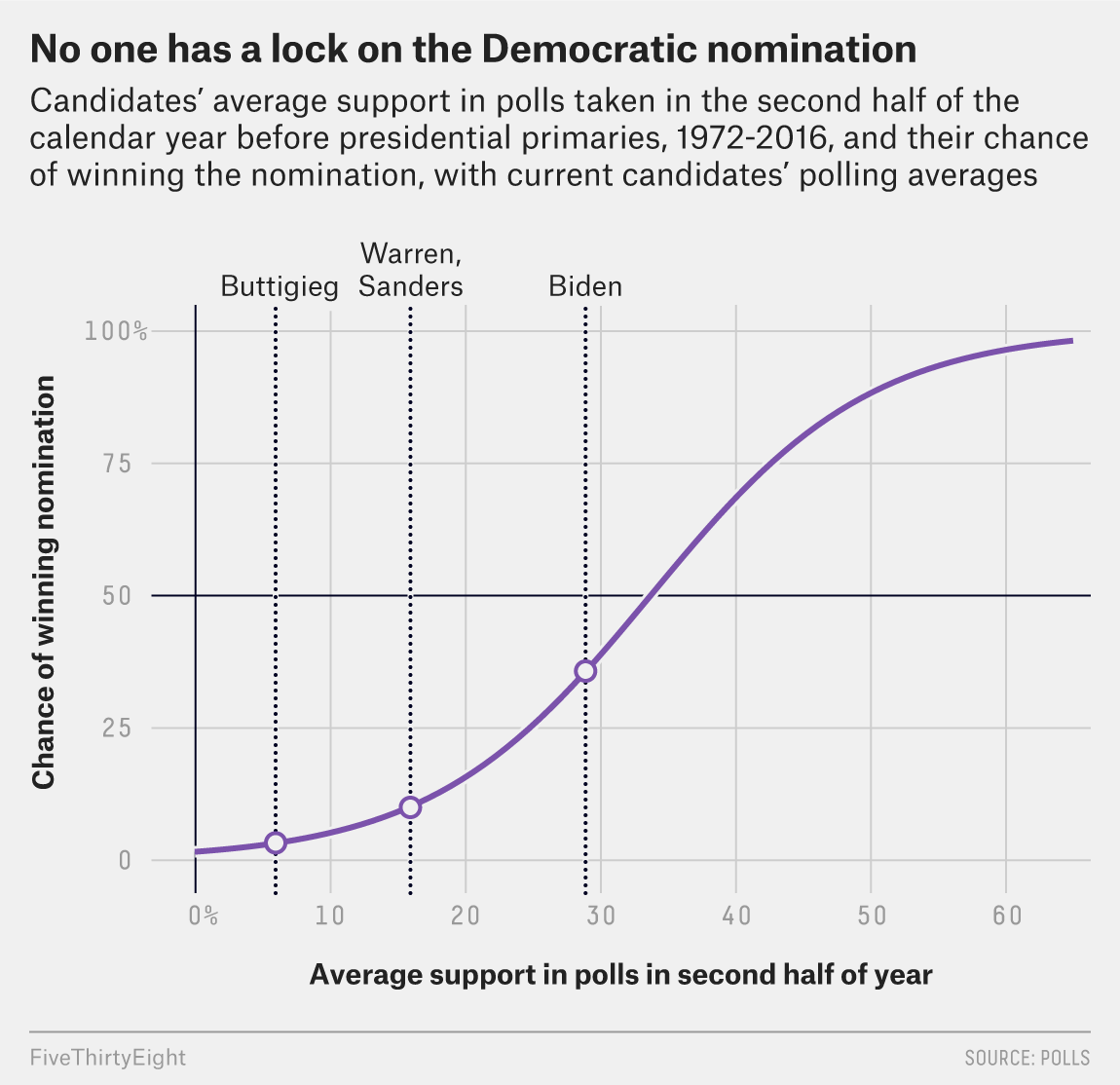
The results show a wide-open field—or, as Geoffrey put it:
…the bottom line is that, at this point, Biden remains the favorite to win the Democratic nomination. That said, his grasp on the lead is tenuous. For instance, when thinking about Biden’s odds, it’s important to remember that the historical data suggests that the rest of the Democratic field combined has a larger chance of winning than Biden does on his own — 44 percent for all of the other candidates still in the race compared with Biden’s 35 percent shot.
The sunbelt strategy
Ronald Brownstein had a piece out in The Atlantic this week about how the Democratic Party’s future is in diversifying sunbelt states, rather than stagnant Midwestern/rustbelt ones. The thrust of Brownstein’s argument chiefly revolves around two facts: (a) sunbelt seats are gaining population, and thus representation in Congress and (b) Democrats perform better with the non-white voter blocs that are growing there. He includes this interesting map of changes in US House seats between 1910 and 2010:
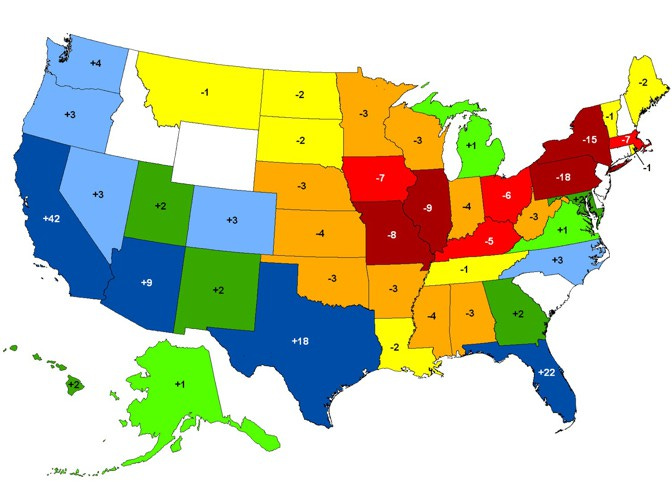
Brownstein concludes:
One of the core underlying dynamics of modern American politics—what Frey has called “the cultural generation gap” and I have termed the collision between the “brown and the gray”—is the ongoing political battle between the predominantly white, conservative-leaning older generations, centered on the Baby Boom, and the more diverse and more liberal Millennial and younger generations.
The Sun Belt is where this confrontation is unfolding most directly: In states such as Texas, Arizona, and Nevada, Frey’s calculations show, white people compose at least twice as great a share of the over-65 population as they do of the population under 18.
The principal battlefield of the 2020 election may remain Pennsylvania, Michigan, and Wisconsin. But the unstinting population shifts that the census recorded last month make it inevitable that the partisan and generational struggles for control of the nation’s direction will be decided more and more in the Sun Belt.
I want to add one thing here. It’s not just the future of the Democratic Party that lies in the sunbelt. The GOP’s future lies there, too. Population change will force both parties to compete in sunny future swing states such as Arizona, Texas and Georgia. Brownstein doesn’t address the question of how Republicans will adapt to a diversifying America. Importantly, their strategy so far has been to double-down on white voters, who are more loyal to Republicans than Democrats. What you think American politics look like in 50 years revolves around whether or not you think that strategy will change.
It turns out that the 1% are leading easy and happy lives
This piece from the Washington Post’s Christopher Ingraham is super interesting, as is the graph he includes:
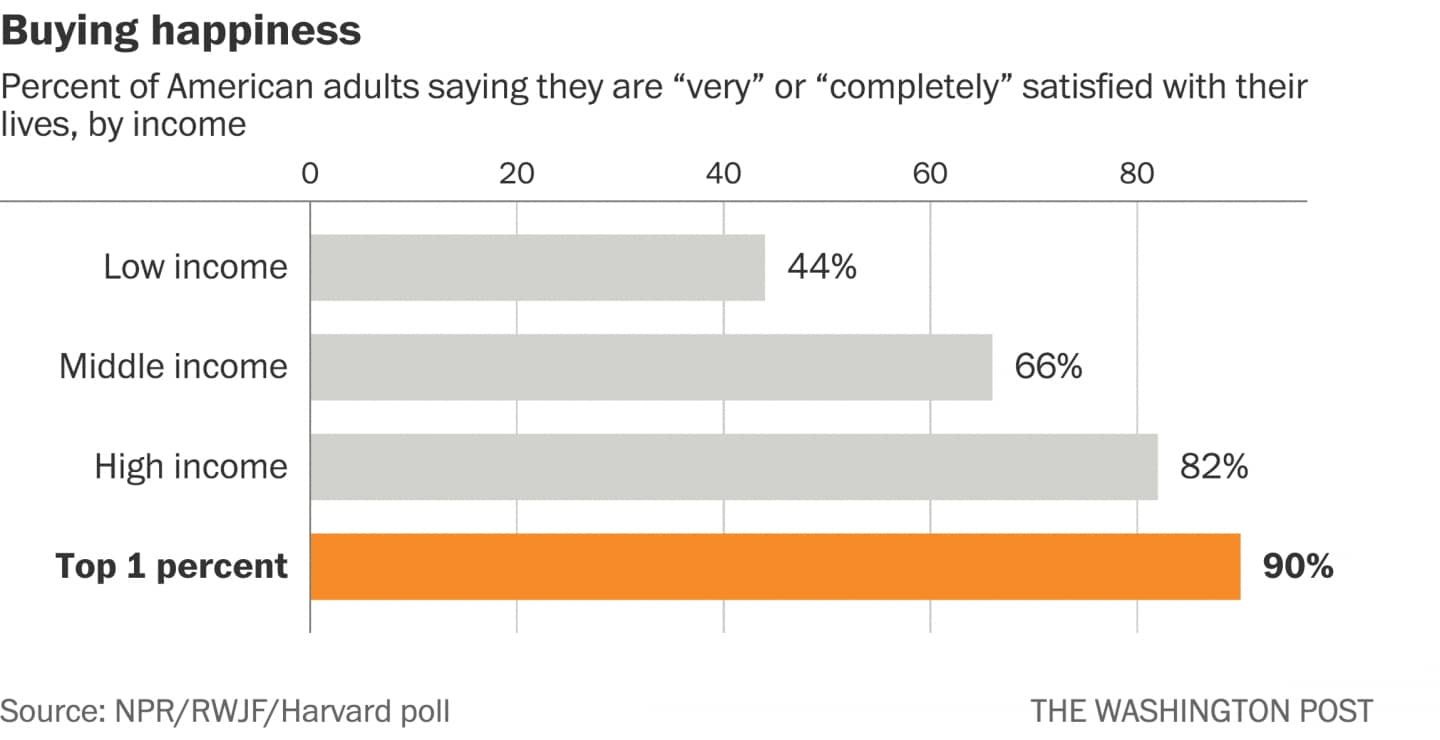
If you don’t want to die from dangerous diseases, get vaccinated
And after you get your flu shot, play around with this cool New York Times interactive:
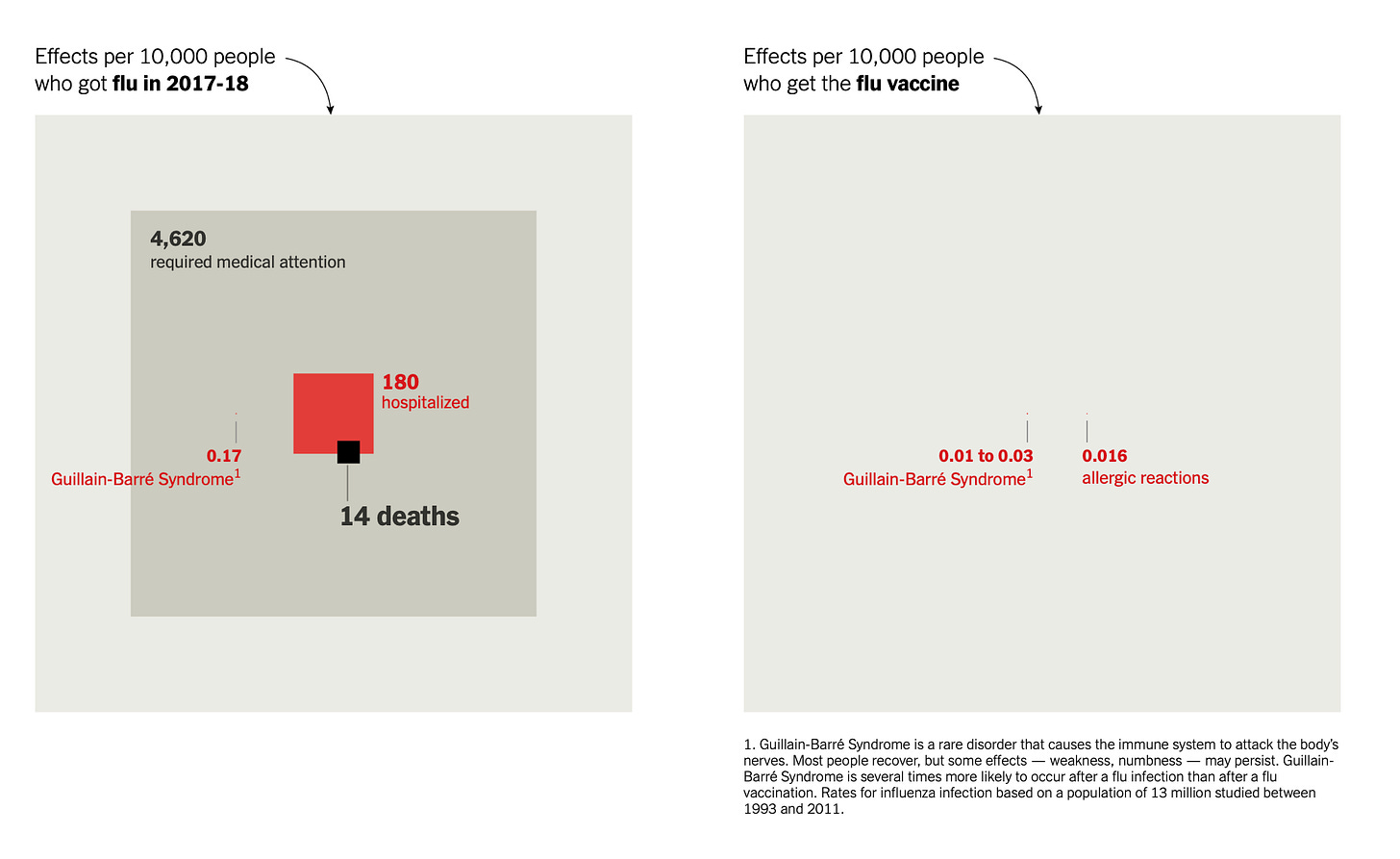
What I'm Reading and Working On
I’ll have more thoughts on Bernie’s rise, and resilience, in the 2020 Democratic presidential primary later this week.
I’m reading political scientist Lee Drutman’s new book, Breaking the Two-Party Doom Loop: The Case for Multiparty Democracy in America. I’ll publish a review of it for newsletter subscribers on Wednesday or Thursday.
Thanks for reading!
Thanks for reading. I’ll be back in your inbox next Sunday. In the meantime, follow me online or reach out via email. I’d love to hear from you!
If you want more content, I publish subscribers-only posts on Substack 1-3 times each week. Sign up today for $5/month (or $50/year) by clicking on the following button. Even if you don't want the extra posts, the funds go toward supporting the time spent writing this free, weekly letter. Your support makes this all possible!




In regards to the book you are reading, I am all about proportional representation with approval voting. Hell ya.